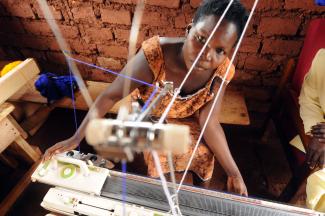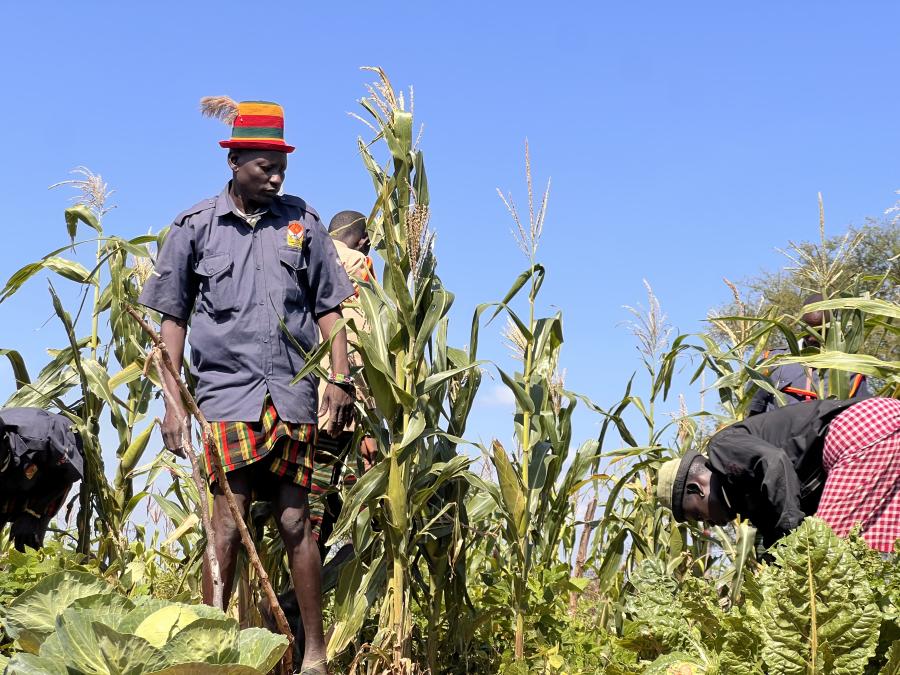
“I have really changed. I am now a doctor for coldness by providing sweaters. I can now support my family.”
— Adul Doreen, vocational training graduate
The first thing you notice upon entering the booth of Project Have Hope are the colorful strings of recycled paper beads—and then the remarkable photographs of children and women by photographer Karen Sparacio, who is also the executive director. Project Have Hope, a nonprofit organizationthat works with 100 women in the Acholi Quarter of Uganda, has been a presence
at Cultural Survival Bazaars for six years and counting. Through the sale of their beautiful, handmade paper bead jewelry, the women can feed their families, send their children to school, and look forward to a richer future.
Residents of the Acholi Quarter, a neighborhood located on the outskirts of Uganda’s capital city Kampala, are internally displaced persons who have fled from war-torn Northern Uganda. These individuals experienced unimaginable atrocities at the hands of the Lord’s Resistance Army (LRA). Led by the infamous Joseph Kony, the LRA has wreaked havoc throughout central Africa for over 20 years. It is known for its brutality, abductions, and use of child soldiers. The majority of the women involved with Project Have Hope have been deeply affected by the war: some were
abducted and escaped; many lost family members and witnessed horrific violence; all have lost their homes in Acholiland. As the women struggle to rebuild their lives and regain their livelihoods, Project Have Hope strives to support them by providing a source of sustainable income and educational and vocational training programs.
Project Have Hope’s Impact
“When asked what my dream was, I did not even know what it meant. But after two classes, we were taught about dreams and visions and that we should base all our thinking on those two. I have since then developed a motto that says ‘I can.’ This has made me think big!” said Lanyero Jenifer, an adult literacy program participant.
In 2011, Project Have Hope supported 104 children in school; 100 women received microenterprise loans; and 34 women received vocational training. “With profits from my motorcycle business, I have bought land and oxen to help me produce simson (a staple food). And now even if I am not here, the asset can help my children,” says project member Ayoo Jennifer.
In addition to microloans and vocational training, Project Have Hope runs adult literacy programs and has also trained Acholi women how to cultivate balcony gardens and food such as tomatoes and mushrooms. Last year the organization supported local members by constructing a greenhouse; the women have been able to feed their families and generate additional income by selling the produce at the local market.
Project Have Hope has just launched a new line of jewelry featuring the “Hope Cures” collection: cancer awareness bracelets made from the iconic recycled paper beads. These bracelets allow the
wearer to show support for women with cancer, survivors, and their caregivers. Additionally, one dollar from the sale of each Hope Cures bracelet is donated to the Ugandan Child Cancer Foundation to support young patients at the Uganda Cancer Institute.
www.projecthavehope.org
The 2012 CS Bazaar series raised over $445,749 for Indigenous artisans and their communities. Find a Bazaar near you! Visit: bazaar.culturalsurvival.org


